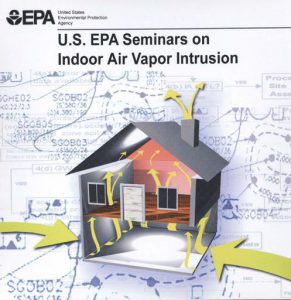VENTILATION – HOW MUCH IS NECESSARY ?
INTRODUCTION
Adequate ventilation is a key factor in achieving indoor air quality (IAQ).Our goal is to remove particulates and VOCs from our indoor environment. We can achieve this goal through ventilation, through portable air cleaners or a combination of both. The proper balance between the two will depend on our specific situation.
A brand new home will have been designed to meet local building standards, which in most places specify ventilation requirements. Since new buildings are designed mostly for energy savings they are typically built to minimize energy losses and are therefore tightly insulated, minimizing air infiltration. But new buildings make use of synthetic materials that introduce new contaminants such as volatile organic compounds (VOC) s.
So, if you have a brand new home you cannot assume that you have good indoor air quality. On the other hand, if you live in an older home you probably have a large outside air infiltration. Depending on your location, this air infiltration may carry pollutants which you must remove along with the pollutants created indoors from normal living. Furthermore, your older air ventilation system, if any, may not be adequate.
In this article we will examine common sense approaches for improving indoor air quality.
WHAT THE SCIENTISTS TELL US
In the United States the ventilation standards for new buildings are established by the American Society of Heating, Refrigeration, and Air Conditioning Engineers (ASHRAE).The current standard (2013) requires that new homes need to be ventilated at a rate of 7.5cfm (cubic feet per minute) per person plus 3 cfm per 100 square feet. The standard assumes that the number of occupants in a home equals the number of bedrooms plus one. As an example a 2000 square foot home with two bedrooms should have a ventilation system capable of supplying as a minimum 82.5 cfm.
This standard is a compromise of different views within the ASHRAE. The standard does not specify how the air is to be distributed within the home. Ventilation systems can be exhaust systems in which air is extracted in one location of the home. In this system there is no control of the incoming air quality nor how much air is extracted from rooms removed from the exhaust fan location. The air is replaced with outdoor air through infiltration.
A supply only ventilation system can provide better distribution of the incoming air by using ducting and the incoming air quality can be controlled by using a filter system at the air entrance point.
The basic problem with the standard is that the science is not settled as to what the ventilation rate should be to insure a healthy environment. The standard is a reasonable technical judgment made by Engineers, but it is not based on exact science.
Ventilation can also be characterized by the air change rate (h-1), which shows how many times the air inside a room or house is being replaced by outside air within one hour. Typical air change rates measured in US homes range from 0.5-2.2 h-1, varying with the seasons.
In Europe the European Union standards are more detailed. The most recent standard is the EN15251:2007.This standard specifies minimum ventilation rates for Mechanical Ventilation (MV), depending on the type of ventilation used, either Supply Airflow or Exhaust Airflow. Furthermore, the building designer can choose one of three criteria for the ventilation system design: total ventilation rate for the home, supply airflow for bedrooms or supply airflow based on number of home occupants. As a general rule the whole house ventilation rate should also exceed 0.5h-1 or 14 l/s per person in bedrooms to assure low concentration of pollutants.
The recommended airflow depends on the desired Air Quality Class of the building, from Class I to Class IV, where Class I represents the highest air quality. The above are guidelines only. Other requirements are maintaining levels of CO2 and VOCs below specific values. Furthermore, different countries within the European Union have their own standards based on their climate.
As we can see there are many ways in which scientists classify buildings based on air quality, and on the subjective comfort of the occupants. Unfortunately, there are no scientific studies that correlate ventilation rates with healthy environments. All of the guidelines are best estimates made by Engineers in the absence of definitive scientific studies.
DISCUSSION
We have presented different ventilation rates proposed by various standards. However there are other factors, such as the type of ventilation used and the type of airflow control strategy.
The various ventilation systems can be used continuously (CAV or constant volume systems) or intermittently (DCV or demand control ventilation systems).Click here to see my recommendation on a very efficient HVAC Air Filter.
Recently Demand Control Ventilation using CO2 to modulate outside air ventilation, based on actual measurements of CO2 levels in the home, is gaining in popularity. [1]
Ventilation is necessary but not sufficient. We must also insure that levels of PM2.5 particles and VOCs remain below safe levels.
Recent experimental studies in Europe reported by Darius Cinzas et.al in a paper published in Aerosol and Air Quality Research [2] indicated that the combination of Ventilation and Air Cleaning was the most efficient way to achieve a healthy environment. Air cleaning, using Air Purifiers, was the best way to remove particulate matters while ventilating seemed to be the most effective way to remove VOCs. The combination of ventilation and air cleaning increased pollutant removal efficiency by 20%.

CONCLUSION
The science is not settled as to what ventilation rates are required, in different conditions, to insure a healthy environment in our homes.
Common sense dictates that we strive to achieve the ventilation rates specified by local standards and that we add Air Purifiers in areas of the home where pollutants are generated, and in rooms where we spend most of our time.
Improving Indoor Air Quality in our Homes is our individual responsibility.
Adding Air Purifiers in our Kitchen, Bathroom and Bedrooms will be a step in the right direction.

Carlos
References
1 Mike Schell and Dan Inthout.
“ Demand Control Ventilation Using CO2 “, ASHRAE Journal, February 2001
2 Darius Ciuzas, et al. (2016)
“ Indoor Air Quality Management by Combined Ventilation and Air Cleaning, an Experimental Study“
Aerosol and Air Quality Research, 16:2550-2559, 2016
Good evening Carlos,
I read your in-depth article with interest. Especially when one moves into a new home, pressed materials with glue etc are not desirable at all. In older homes, you have to look out for mold which is extremely harmful. The previous owners might not have taken care of adequate airing and that might have caused a buildup of mold in the spaces in between walls.
I live in a 180-year-old farm in the south of Spain. Now please do not laugh but I do the airing of the house the farmer’s way.
In summer, getting up at 07.00 I open the whole house for about 2 hours to then quickly close as it is getting warmer. In wintertime, it is the opposite. At midday with the sun shining I open everything.
Regards, Taetske
Good evening Taetske,
Thank you for your comment.I envy you.You are very fortunate living in an area where outside air is good.The proven farmer’s way to ventilate is great.That is all you need.However since we produce some indoor air pollution through our daily activities ,just to make sure you could consider getting an air quality monitor to make sure that you are not creating harmful pollutants from cooking,cleaning etc.I am listing an article on how to select an air monitor if you are interested.
Saludos
Carlos
https://improvingindoorairquality.com/air-quality-monitors-do-you-need-one